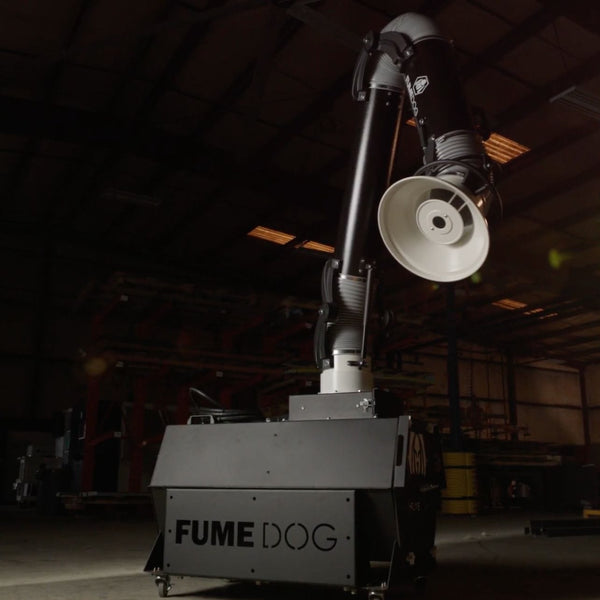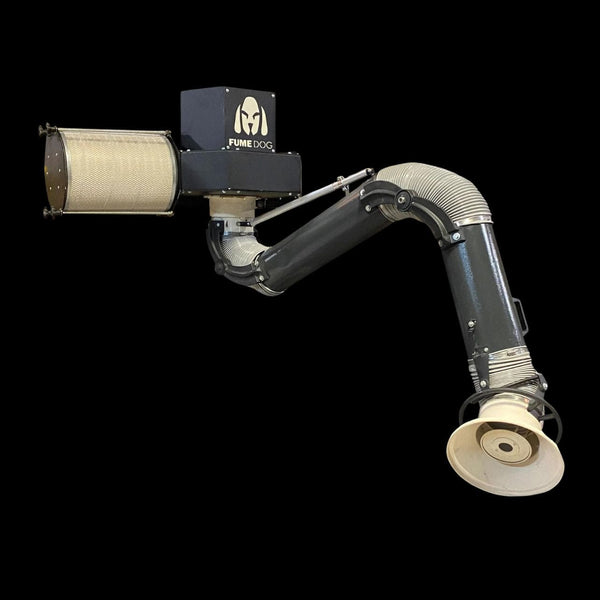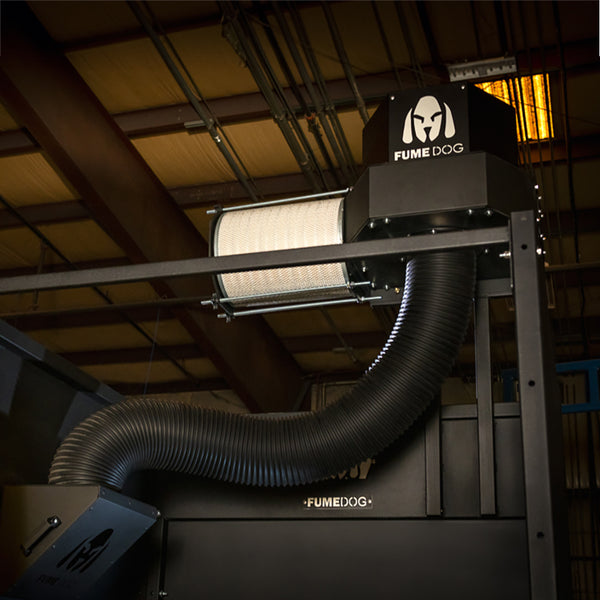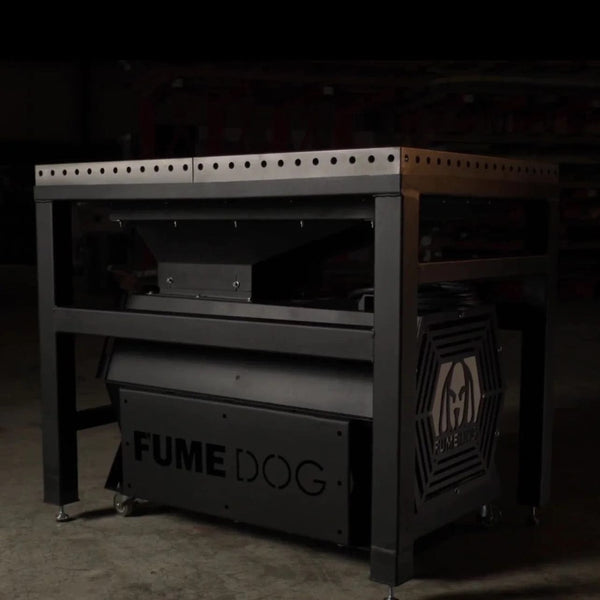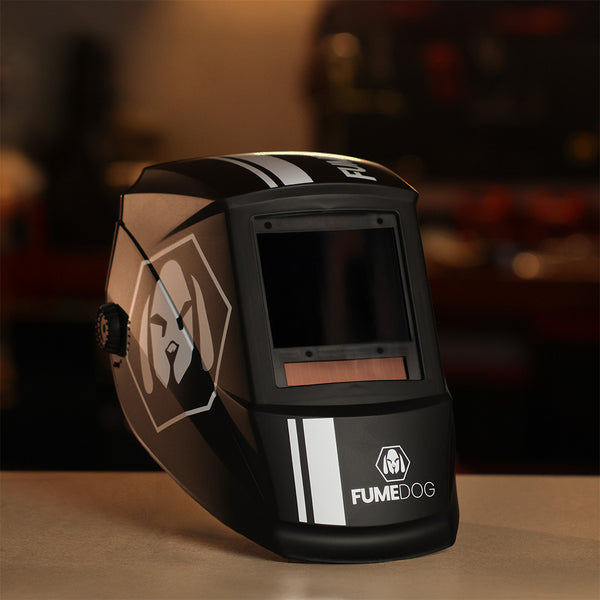
Don't let a dirty or damaged lens compromise your safety and work quality. Fume Dog's welding helmet combines superior optical clarity with reliable protection, featuring easily replaceable lenses that make maintenance simple and cost-effective.
When you're ready to upgrade to a helmet that's built for serious welders, explore our professional welding helmet and experience the difference quality makes.
Why Clean Vision is Critical for Welding Safety
Your welding helmet serves as your primary protection against harmful UV radiation, sparks, and debris. But when the lens gets dirty, dusty, or scratched, it creates more than just an inconvenience—it becomes a serious safety hazard.
Clean vision allows you to see your weld pool clearly, helping you maintain proper technique and avoid defects. Poor visibility can lead to incomplete penetration, porosity, or other weld defects that compromise structural integrity. More importantly, struggling to see through a dirty lens might tempt you to lift your helmet during welding, exposing yourself to dangerous radiation and welding safety hazards.
Impact on Welding Quality and Safety
Whether you're working on MIG welding projects or TIG welding applications, clear vision is non-negotiable. Dirty lenses can cause eye strain, leading to fatigue and decreased concentration—both dangerous when working with high temperatures and electrical equipment.
Additionally, maintaining proper welding safety practices includes ensuring your entire workspace has adequate ventilation. Consider how preventing metal fume fever and maintaining clean equipment work together to create a safer welding environment.
Understanding Your Welding Helmet Lens Types
Not all welding helmet lenses are created equal. Understanding your specific lens type helps you choose the right cleaning approach and avoid damage during maintenance.
Plastic Lens vs. Glass Options
Most modern welding helmets feature either a plastic lens or glass lens system. Plastic lens options are lighter and more impact-resistant, making them popular for everyday use. However, they're more susceptible to scratches and require gentler cleaning techniques.
Glass lenses offer superior optical clarity and scratch resistance but are heavier and more expensive to replace. Regardless of your lens material, proper cleaning techniques will extend its lifespan and maintain optimal performance.
Outer Lens and Cover Lens Functions
Your welding helmet typically includes multiple protective layers. The outer lens serves as the first line of defense against sparks and spatter, while the cover lens protects the more expensive auto-darkening filter underneath.
The cover lens takes most of the abuse during welding, which is why it's designed to be easily replaceable. Regular cleaning of both the outer lens and cover lens ensures maximum protection and visibility throughout your welding projects.
See Our Featured Products
Essential Cleaning Supplies for Your Welding Helmet
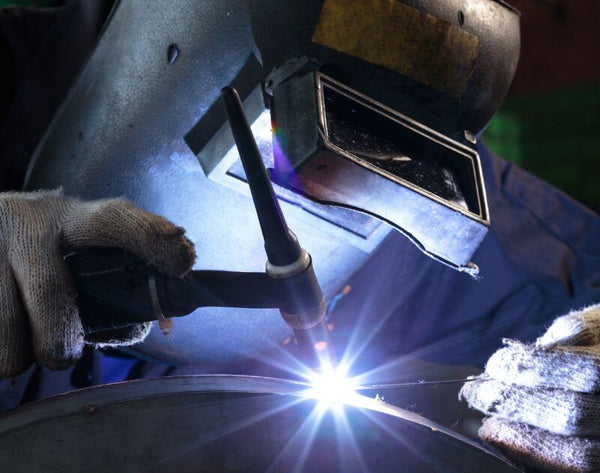
Having the right cleaning supplies makes all the difference between effective maintenance and potential damage to your welding helmet lens.
Choosing the Right Lens Cleaner
A quality lens cleaner specifically designed for optical surfaces works best for most cleaning situations. Avoid harsh chemicals or abrasive cleaners that can damage anti-reflective coatings or scratch the surface.
For basic cleaning, distilled water often suffices. For stubborn residue, specialized optical cleaners provide extra cleaning power without risking damage to your lens.
Microfiber Cloth vs. Soft Cloth Options
A microfiber cloth is your best friend when cleaning welding helmet lenses. These cloths lift dirt and oils without scratching, unlike paper towels or rough fabrics that can create permanent damage.
Keep multiple microfiber cloths on hand—one for initial dust removal and another for final polishing. If you don't have a microfiber cloth available, a clean, soft cloth can work in a pinch, but avoid anything with rough textures or loose fibers.
Step-by-Step Guide to Clean Welding Helmet Lens
Proper technique prevents damage while ensuring thorough cleaning. Follow these steps for professional results every time.
Initial Dust Removal with Compressed Air
Start by removing loose dust and debris with compressed air. Hold the canister upright and use short bursts to avoid moisture buildup. This step prevents grinding particles into the lens surface during wet cleaning.
Pay special attention to corners and crevices where dust accumulates. Removing this debris first makes the subsequent cleaning steps more effective and reduces the risk of scratching.
Proper Wiping Technique for Surface Cleaning
Apply your chosen lens cleaner to a clean microfiber cloth—never spray directly onto the lens. Using gentle, circular motions, wipe the entire surface starting from the center and working outward.
This technique prevents streaking and ensures even coverage. For stubborn spots, let the cleaner sit for a few seconds before wiping, but don't let it dry completely on the surface.
Dealing with Scratches on Your Clean Lens
Minor surface scratches are inevitable with regular use, but proper cleaning technique minimizes their impact on visibility. For light scratches on plastic lenses, some welders report success with plastic polish, though this should be used sparingly and tested on an inconspicuous area first.
Remember that deep scratches compromise safety and require lens replacement. Don't attempt to "fix" scratches that affect your ability to see clearly through the lens.
When to Use Glass Cleaner on Welding Helmet Lenses
Standard glass cleaner can work for basic cleaning, but choose ammonia-free formulations to avoid damaging anti-reflective coatings. Glass cleaner works particularly well on actual glass lenses but should be used cautiously on plastic surfaces.
For best results, apply glass cleaner to your cloth rather than spraying directly onto the lens. This prevents excess liquid from seeping into the helmet's electrical components if you're cleaning an auto-darkening helmet.
Check Our Latest Products
Frequently Asked Questions
How often should I clean my welding helmet lens?
Clean your lens after every welding session or whenever visibility becomes compromised. For heavy-use environments, daily cleaning might be necessary, while occasional welders might clean weekly with just a few drops of lens cleaner.
Can I use a t shirt to clean my welding helmet lens?
While a clean t shirt can work in emergencies, it's not ideal for regular cleaning. Cotton fibers can scratch delicate lens coatings, and fabric softeners leave residues that attract more dirt.
What's the best way to remove stubborn residue without scratches?
For tough spots, apply cleaning solution and let it sit for 30 seconds before wiping. Use just enough pressure to lift the residue without forcing it. Patience prevents the minor scratches that come from aggressive cleaning.
Should I use rubbing compound on scratched lenses?
Rubbing compound is too abrasive for most welding helmet lenses and will cause more damage than it fixes. If scratches impair visibility, replacement is the safest option.
Can buffing compound restore clarity to old lenses?
Buffing compound might temporarily improve appearance, but it removes material from the lens surface and can compromise protective coatings. Professional restoration or replacement is safer.
Is it safe to clean lenses that have residue in cake form?
Yes, but soak the area with cleaning solution first to soften the buildup. Never scrape or use excessive force, as hardened residue can act like sandpaper against the lens surface.
What should I do if my lens gets damaged during cleaning?
Stop using the helmet immediately if cleaning reveals cracks or deep scratches. Damaged lenses compromise safety and require immediate replacement before your next welding session.
How do I clean around the buffing wheel area of my helmet?
Remove any detachable components according to your helmet's manual before cleaning. Use cotton swabs with cleaning solution to reach tight spaces, ensuring no moisture enters electrical components.


